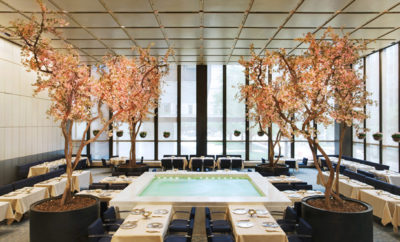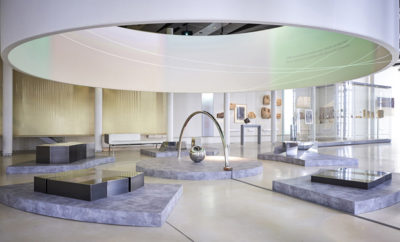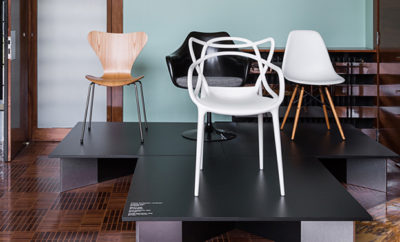
Design
Reinventing the Chair: Carlos Motta’s First US Retrospective

Atelier Carlos Motta: 40 Years at the ESPASSO gallery in New York.
One mark of creativity for a designer is the ability to reinvent and stretch the limits of the quotidian objects and furnishings that are essential to our everyday lives. In Carlos Motta’s first US retrospective Atelier Carlos Motta: 40 Years at the ESPASSO gallery in New York, the chair proves a fertile testing ground for new ideas. Of the 50 pieces in the exhibition, 29 are chairs (14 dining and 15 lounge chairs), and go a long way towards illustrating the breadth of the Sao Paulo-based designer’s work. “I decided to bring chairs because they are representative of the work,” says Motta. “It is not a big object but it is so expressive, and it is not easy to design.”
Motta opened his architecture office and wood shop, Atelier Carlos Motta, in 1975 in Sao Paulo’s Vila Madalena district. His interest in design first began on surfing expeditions to Brazil’s remote beaches where he discovered “beautiful driftwoods” that he took home and transformed into some of his first pieces. Later on, with the tools he acquired through his training as an architect, he fine-tuned his approach. Even today as Motta incorporates new materials and technologies, wood remains a prominent feature in his designs, with an emphasis on using reclaimed, FSC-certified species from Brazil. Placing both his architecture practice and furniture design studio under one roof enabled him to maintain a fluid and integrated work process. “I am always between one and the other: drafting, designing, construction, woodwork, back and forth.”

Carlos Motta, Pindá armchair.
In addition to showcasing four decades of work, the exhibition, which opened September 16, also presents 11 limited edition pieces by Motta. These include the “Sergio” a rotating armchair made of Peroba Rosa wood and sanded iron, named for a close friend, the late designer Sergio Rodrigues; and the “Pinda,” a lounge chair that takes inspiration from the beautiful, yet sometimes deleterious flora and fauna in Brazil’s jungles—which features a seamless wooden front and then bears spikes on its backside.
The exhibition’s eclectic mix of furniture doesn’t aim to put forth a singular style or communicate a specific ethos, but it exemplifies the evolution of Motta’s work and the influences that have informed it: just take a look at the collage of hand-drawings and photographs covering the gallery walls showing the jungle, water, beaches, and natural habitats of his country. “It isn’t the idea to be an avant-garde. I am here right now. My chairs are similar to other chairs but they are very honest objects, and there is a social responsibility to them,” explains Motta. “There are a lot of things that you add to the design itself that makes it very clear, very honest, very expressive. I think this is representative in the show.”












